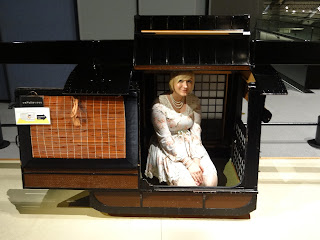Ohayo Cuties
Day 6 part 2
Day 6 part 2
so part two of my day with my good friend Koichi, finally arrived at the museum and I am a first time smoking. I know most do not like it, but I have really little smoked in Japan on and off for the long one may probably even enjoy a cigarette.
this was the input of the museum looks so cool
now you will see lots of photos
But I will hold myself back because I made a lot of photos.
now you will see lots of photos
But I will hold myself back because I made a lot of photos.
i hope you like it
previously looked a lot different
I've tried everything what was possible, that was the most beautiful in the museum
Koichi and Catrin found it funny how much I've been looking forward to put me on the stuff. I mean hello something may not get you anywhere.
Bookshop of light fiction
im hercules,
that was not so hard, but I think if you tried to run so you fall down.
that was not so hard, but I think if you tried to run so you fall down.
Tidus sword from Final Fantasy (‐^▽^‐)
Wigs and Kimonos from Geishas and Kabuki Theater
Props and costumesTo present and effective, the kabuki theater made much use of stage sets, props, and costumes. Depending on what was being staged, colorful props and costumes were prepared, providing a dazzling spectacle.
The example of the play "Sukeroku" is typical. The hero, Sukeroku, wears a headband dyed an "Edo purple" and dons a red and black outfit conforming to the Edo citizenry´s aesthetic of iki ("chic" or "stylishness"). The heroine. Agemaki. a courtesan of the highest rank, wears a kimono with patterns that symbolize the "five annual festivals". For this display the most lavishly adorned outer robe (uchikake) relating to the New Year´s festival has been chosen. The villain Ikyú also wears a jacket extravagantiv embroidered with designs of dragons, tigers, and other mythical beasts, reflecting the Edo popluaces fascination with Chinese designs.
Kabuki spectators were drawn into the world of the theater by means of such unusual effects. The could easily enjoy this form of theater because they understood well the meanings of the colors and patterns used.
It was a beautiful time in the museum, for me it was too much, because I quickly boredom, but I was very happy. I'm still worried and souvenir keychains for my work colleagues.
Arigatō Koichi
Mata ne my Cuties
































Keine Kommentare:
Kommentar veröffentlichen